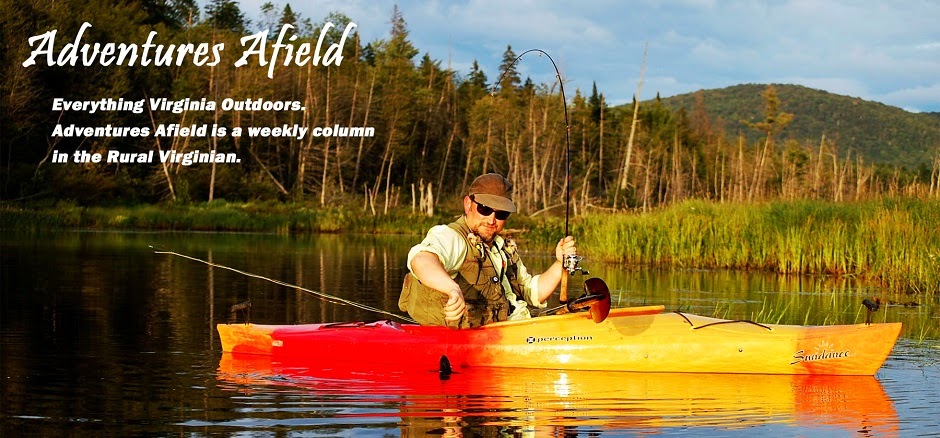In an age of rapid population growth, LCD overload, and unprecedented cultural disassociation from nature and the outdoors, when mass marketability rules, often in favor of more traditional, refined values, outdoor television has been stolen from the everyman. A family of family and friends from Central Virginia is stealing it back.
 |
| The Mason-Dixon Experiment focuses on providing viewers the raw experience of a family-oriented outdoor lifestyle, over adrenaline-soaked cut-shots and badassery. |
Back in 2013, hunting partners John Miller and Britton White were sitting on a tailgate of a truck having lunch when they came up with the idea of trying to put together an outdoor TV show. They conceived the idea and the name, The Mason-Dixon Experiment (MDE), but life and full-time jobs got the best of their forward momentum until 2015, when White began talking to church friend, Eric Umstead, a graphic designer, about how to get things up and running. White’s wife, Jessica White, and father, Junior White, both got involved, and the idea started to gain traction.
“We want to bring a different side of the outdoors to TV that will show folks that it’s not always about your catch or harvest, but about the experiences you have, good or bad, in the great outdoors,” said Britton White.
The Mason-Dixon Experiment team, family people who promote the tagline “Shoot straight and get your kids outdoors,” also promote a strong family and conservation ethic.
“The Mason-Dixon Experiment is all about the next generation of outdoors-person,” said Umstead. “Our children and grandchildren are becoming more dependent on a system that might one day let them down. Being self-sufficient—hunting, fishing, camping, cooking, etc.—shouldn’t be dying skills, but basic human rights that enable us to provide for our families no matter what comes to pass. Our goal is to promote outdoor pursuits and to educate everyone on the benefits and enjoyment of a sustainable outdoor lifestyle.”
Right off the bat, the team started filming every time they went out in the field.
“We got some good, some bad, but again, it’s about the experience,” said Britton White.
After filming for a full season, they had compiled enough footage for five episodes—enough to start—and each subsequent season brought more and more footage and more episodes. Today, The Mason-Dixon Experiment can be viewed on Gen7 Outdoors and The Hunt Channel, both online, digital media platforms.
“We chose digital media because we found that the majority of our followers—males 18 to 44 years old—were consuming information differently than back in the 80s and 90s,” said Britton White.
“It seems all signs pointed to streaming and digital media.”
The show airs both live and on-demand on Gen7 Outdoors, airing live Mondays at 11 AM, Tuesdays at 7 PM, and Fridays at 11 AM. The Hunt Channel is currently on-demand only. And short episodes will be airing on CarbonTV starting in 2018.
Though the show’s primary subject is hunting, the team does film fishing and other outdoor content, too, often in the form of live videos from the field.
“We have aspirations of adding a food preparation aspect to it, too,” said Jessica White. “We want to show that this is not just a sport to us, but that we use it to provide for our families. Britton and I haven’t bought beef in four years.”
Along with the success that The Mason-Dixon Experiment has seen in its short time, there have also been the quiet struggles that face any entrepreneurial endeavor.
“Another aspect of this is money,” said Britton White. “It takes money to do what we do, and it’s not cheap. Trying to manage personal expenses with the expenses associated with MDE can be stressful.”
“In the home, it’s difficult because Britton and I both work full time jobs and MDE takes up additional time,” said Jessica White. “Ultimately, we really feel like we have something special, so to be able to put the time in is worth it.”
“MDE has been a blessing to all of us. Our pursuits with MDE have become an extension of our daily lives, our interactions with each other and with those we come in contact with at work, school, church, and community,” said Umstead. “We have made strong connections with other outdoor teams, our sponsors and followers, and the benefits far outweigh the challenges.”
To support pure, local outdoors, follow the team on social media, watch the show, and reach out and give feedback. And take a kid hunting.
“We want to build a community around what we are doing,” said Britton White. “The tradition of hunting and the outdoors goes back further than any of us, so trying to keep that legacy going is our main goal. Our youth is our means to keep that tradition alive and moving forward.”□
*Originally published in The Rural Virginian




